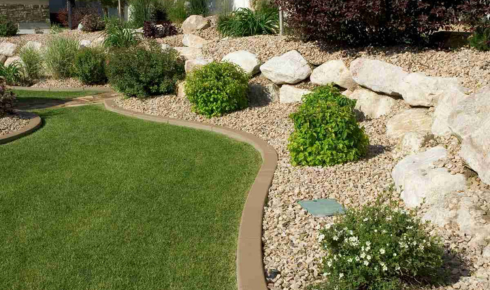Artificial Grass: The Perfect Low-Maintenance Landscaping Solution
Artificial grass has revolutionized the way homeowners, businesses, and sports facilities approach landscaping. Offering a vibrant green look throughout the year without the hassle of traditional lawn maintenance, it has become the go-to choice for those seeking beauty, durability, and cost-effectiveness. Whether you are upgrading your backyard, enhancing a commercial property, or creating a safe play area for children and pets, artificial grass is a practical and stylish solution.
What is Artificial Grass?
Artificial grass, also known as synthetic turf, is a surface made from synthetic fibers designed to replicate the look and feel of natural grass. Modern manufacturing techniques have advanced so much that it can be challenging to tell the difference between synthetic and real grass at first glance. It is laid over a well-prepared base, ensuring excellent drainage and stability for various applications.
Advantages of Artificial Grass
The popularity of artificial grass stems from its numerous benefits, including:
-
Low Maintenance – No mowing, watering, or fertilizing is needed.
-
Cost Savings – Reduced water bills and minimal upkeep expenses over time.
-
Year-Round Greenery – Stays lush and vibrant in all weather conditions.
-
Durability – Resistant to wear and tear, even in high-traffic areas.
-
Eco-Friendly – Eliminates the need for harmful pesticides and excessive water usage.
These advantages make artificial grass an appealing option for residential, commercial, and recreational spaces.
Common Uses of Artificial Grass
Artificial grass is incredibly versatile and suitable for a wide range of applications:
-
Home Lawns and Gardens – Perfect for maintaining a green outdoor space without constant upkeep.
-
Sports Fields – Commonly used for football, hockey, and tennis courts due to its consistent playing surface.
-
Play Areas – Provides a safe, cushioned ground for children’s playgrounds.
-
Pet Areas – Easy to clean and maintain for pets to play comfortably.
-
Rooftop Gardens and Balconies – Adds a touch of greenery to urban living spaces.
Installation Process
Installing artificial grass involves a step-by-step process to ensure longevity and quality:
-
Preparation – Removing existing grass, weeds, and debris.
-
Base Layer – Adding crushed rock or sand for drainage.
-
Laying the Turf – Rolling out the artificial grass and trimming to fit.
-
Securing – Fixing it with nails or adhesive.
-
Finishing Touches – Brushing fibers upright and adding infill for stability.
Professional installation ensures the best results, but DIY is possible with the right tools and patience.
Maintenance Tips
While synthetic turf requires minimal upkeep, a little care keeps it looking fresh:
-
Remove debris with a broom or leaf blower.
-
Rinse occasionally to eliminate dust and spills.
-
Brush fibers to maintain their shape.
-
Clean pet waste promptly to avoid odor build-up.
Cost Considerations
The cost of artificial grass varies depending on quality, pile height, and installation method. While initial expenses may be higher than natural grass, long-term savings on water, fertilizers, and maintenance make it a cost-effective choice over time. Additionally, it can increase property value by improving curb appeal.
Environmental Benefits
Artificial grass contributes to water conservation and reduces chemical use in landscaping. Many manufacturers now produce eco-friendly turf made from recycled materials, further minimizing environmental impact. At the end of its lifespan, recycling options are available to ensure sustainable disposal.
Conclusion
Artificial grass offers an attractive, long-lasting, and low-maintenance solution for modern landscaping. From home gardens to sports arenas, its durability, aesthetic appeal, and environmental benefits make it a smart investment. With proper installation and occasional upkeep, you can enjoy a lush green space year-round—without the challenges of traditional lawn care.

